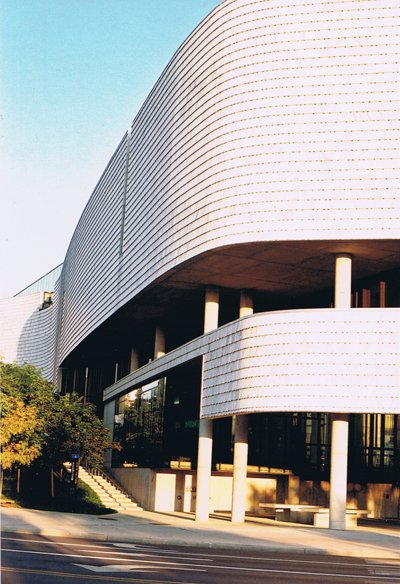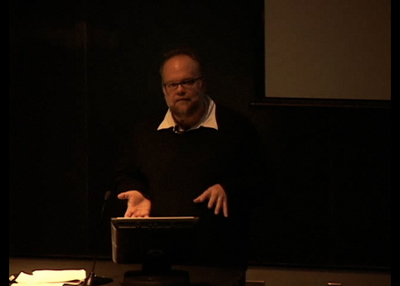
Sep '09 - Oct '11
So, as I sit here and drink some apple cider - delicious - and listen to my Fleetwood Mac records - some people think they kind of lost it after the Rumors album, I believe they've been spectacular all the way through their career - I want to give a reflection to a stirring lecture that happened two weeks ago.
It's a new home, a new year, and there's a whole lot happening, so I fear this post is going to get overbearing if I tackle everything at once. Therefore, be patient on specific project/class updates as I will make separate posts for those in the near future.
A quick introduction of myself:
My name is Greg Evans. I have a BS in Architecture from the College of Architecture & Environmental Design at Kent State University. This is my first year at the Ohio State University, and I am in the Master's in Architecture program at the Knowlton School of Architecture. Since I am a G2 student, I will hopefully have my degree in two years. I am also the graduate assistant to the Baumer Lecture Series. If you can't get enough of bios, you can see mine here.
So, this is my new home:
If you haven't had the chance to visit Knowlton Hall, you must! I remember coming and wandering this building with some friends a few years back when we came down for the Thom Mayne lecture - I was in awe then, and I still am. It's inspiring to work here, and somewhat of a thrill to "go to studio." Something I haven't felt in a while.
Thus far, we have had two lectures in the Territory series. Both John McMorrough and Monica Ponce de Leon took this subject and expanded on it in unique, intriguing ways. The subject is thought to not only talk about territories such as land within architecture, but provoke discussions between the different programs held in the KSA - Architecture, Landscape Architecture, Planning - and realize and rethink the confines between these disciplines and the possible reterritorialization between them as well.
John McMorrough opened the series with his lecture entitled "Claim Jumping". By definition, a claim-jumper is one who seizes another's claim of land or territory, especially for mineral rights and possession. This idea, applied to architecture, was begun by John as architecture's prospects for change through, what he called, "five years, five histories." (The five years, in this case, refers to his five years at the KSA.)
These "Five Histories" were born out of five essays John has written over the past five years. These histories were:
1) Form v. Program / "Adaptive Reuse"
2) Disciplinary Context / "Ru(m)ination"
3) Alternative Potentials / "Elseworlds"
4) Society / "Apocalyptic" Mode
5) Practice / (Practice, Practice)
Out of these histories, or evolutions in architecture and time, John discussed dilemmas in current practice and how those shape what we call "architecture" today. These led him to the question of "what is the next iteration of this architecture thesis, and how can we start to think about it?"
His answer, something he's been "kicking around" for the past year, is something he calls "the New Casual-ty" - a play on the idea of another death of architecture; the causality, as in what are the cause and effects on what architecture does; and also not to think of these things as a sort of "doom and gloom," but to approach this new era with some sort of positivity and casualness. To illustrate this new "thesis," John proposed a new attitude towards architecture with his "(5) Points for a New Architecture Attitude:"
1) Make Quantification Count
2) Reimagine Systems
3) Use Instrumentality
4) Have It Look Like Something (Else)
5) Act Like An Architect
"There is a reason why the evocation of architects brings forth associations with vision and control. It is because architecture and architects themselves operate as the embodiment...of the man or a woman with a plan. Ultimately what we do at this school is train people to lead the world, and we should not apologize for that, but we should embrace it and claim it."
John concluded his lecture asking, "Where are we now?" He recognized that the world is changing both environmentally, economically, and culturally. And I love this quote: "These require responses and not speculation." He believes that architects hold a great legacy in designing the world through thought and technique but they play less and less of a role in the creation of that world. "In the past," John says, "the question was 'what might architecture be?' The question now is, 'what might architecture do?" For this answer, John looked to Kamandi, the last boy on Earth (by Jack Kirby).
What John suggested was that architecture and architects themselves are like Kamandi in that, we are all in a new territorial world - much like Kamandi. This world of Kamandi also inspired the KSA Fall Lecture poster, which we "claim-jumped":
This map should look both familiar and foreign to us, much like the world we live in today. In order to continue with a forward progression, architects must evolve and re-territorialize themselves with the world around them. It must resist the established and materialized "codes" and it must "redeploy its conceptual legacies, strengthen its technical competencies, and retool its techniques."
Comically, he then ended saying, "I usually ask the first question out of whatever, I thought it was pretty good and don't have any questions, but if any of you do, I'll take them."
To date, I must say this is one of the best lectures I have heard. I remember when I used to run the lecture series at the CAED with friends and colleagues Charlie Able, now at Columbia University, and Danny Wills, now at the Cooper Union, we used to talk about how we wanted to hear lectures where the speakers took a stance on an issue, and through their work and other respected work illustrated and defended their viewpoints. This is exactly what John did.
It was a very personal lecture on some levels as I have always been very interested in how architecture can inform other disciplines or evolve over time. I've never been content with thinking that architects are only supposed to understand buildings. I feel our education is so deep into problem solving and design, that these principles should be applied elsewhere as well. This lecture gave much more weight to that assumption.
John was inspiring in the sense that he was not negative towards the trajectory of the world, nor was he fictional. Instead, he briefly discussed issues and dilemmas architects face in society today, and through a rigorous analysis of historical events, comics, present issues, and endless made-up words, he defended the need for this "reterritorialization" of the profession, and how this evolution could only happen through the redeployment of the knowledge, tools, and skills that architects possess.
Tomorrow.
Matthijs Bouw of One Architecture.
5:30 PM
More posts coming soon:
- Studio with Professor Ashley Schafer
- Studio site visit to Boston
- Grasshopper Primer course
Hope to see some of you tomorrow! Cheers!



2 Comments
nice. i think you're already putting more effort into the ksa blog than I ever did ;)
are they putting the lecture series videos online, or is that still 'in the works'?
Very interesting. I've enjoyed listening to John McMorrough's comments ; wonder where those articles of his were published, do you know? I'll have to look them up.
Block this user
Are you sure you want to block this user and hide all related comments throughout the site?
Archinect
This is your first comment on Archinect. Your comment will be visible once approved.